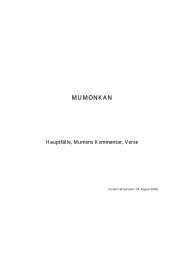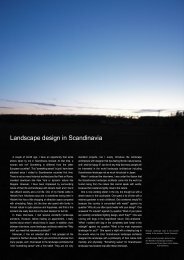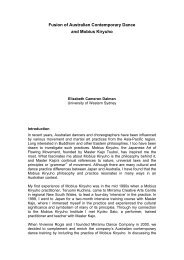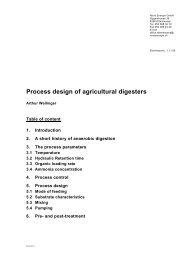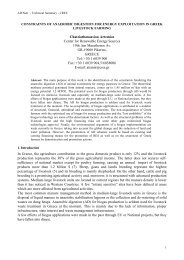III. No-Till Farming Systems - nifty
III. No-Till Farming Systems - nifty
III. No-Till Farming Systems - nifty
You also want an ePaper? Increase the reach of your titles
YUMPU automatically turns print PDFs into web optimized ePapers that Google loves.
quences for agriculture, the environment, and the biodiversity that inhabit fragile<br />
ecosystems.<br />
The shift from conventional to CA requires the implementation of several aspects:<br />
(a) exposure of farmers to different CA practices, particularly through participatory<br />
activity and on-farm demonstrations to show the benefits and practicality<br />
of new techniques, tools, equipment, and cropping techniques; (b) training in<br />
the practical use of new technologies, combined with flexible funding mechanisms<br />
and incentives, particularly during the period of transition; (c) fostering<br />
cooperation and dialogue between scientists, suppliers and farmers, and between<br />
government and educational institutes; (d) development and use of farmerfriendly<br />
tools to measure soil physical health and water-use efficiency; and (e)<br />
achieving and publicizing improvements in land productivity, reduction in farming<br />
costs, and environmental benefits (e.g. carbon sequestration) resulting from<br />
the application of new CA practices, within the BLUE AGRICULTURE integrated<br />
management system.<br />
Both our future food security and conservation of the global environment will in<br />
large measure depend on advances in the science and technologies of sustainable<br />
agriculture, particularly CA. Achieving such advances is indeed possible, but<br />
meeting these challenges will require major increases in investment in specific<br />
research areas, both in Italy and at a global level. The ever-present challenge in<br />
agriculture is to optimize farm productivity in a sustainable fashion, while maintaining<br />
the quality of farmers’ livelihoods, and minimizing impacts and degradation<br />
of the broader landscape. This is particularly true for drylands, where productivity<br />
is already low, options are limited and where many rural people live in<br />
poverty.<br />
The book has over 250 figures, including several pictures and tables explaining<br />
and demonstrating the diverse range of applications of CA and the experimental<br />
results from Italy and international studies. Key references and internet resources<br />
are reported at the end of each chapter.<br />
515




